|
More than once it has been implied that Tiffany and I were a little nuts to take an old wooden boat with a gaff rig offshore -- not to mention around the world. And it is true that I can't think of anyone in the last twenty years that has done so aside from some larger sail training ships. Here is my argument as to why a traditionally built, gaff rigged boat is not only the obvious romantic choice but also the most logical and practical choice for offshore sailing. (As published in the September issue of Classic Boat)
6 Comments
This afternoon I was aboard Vixen stowing her newly galvanized anchor chain. She has weathered a dark and windy winter on a mooring at the very head of Deer Harbor on Orcas Island. One 30-year resident I talked to the other day said this had been the windiest winter she can remember. Fortunately, Vixen has not moved from her assigned spot. She has also not been sailing which has contributed to my own dark and windy winter. Tiffany and I have been battling a storm-surge of bureaucracy associated with transitioning to life on shore. If it wasn't for the fact that Solianna and Seffa Jane love life on Orcas Island and for Tiffany's re-kindled dance career I would be writing this while half-way to the Marquesas with a fishing lure off the stern and the big jib pulling from Vixen's fore-stay. But, escape fantasies aside, here are some highlights: * My sister's short video of our trip took second place at the Winnipeg film festival in February beating out many well-funded, well staffed competitors. https://vimeo.com/139102400 * A friend of Vixen from Brazil subtitled the film in Portuguese and it now has over 90,000 views on facebook. (Tell me if anyone is willing to translate it into any other language and I will try to send a transcript.) (https://www.facebook.com/vagabundosdomar/videos/1121329334574170/ *The English version on Vimeo has nearly 40,000 views: in other words, a lot of people have watched the video. * I'm told that a reprint of the article I wrote on cruising Senegal is appearing in the April issue of Sailing magazine. * I have a 2,500 word diatribe on the advantages of ocean voyaging with a gaff rig appearing in Classic Boat Magazine in the near future. (Someone has to speak for the underdog.) *Our whole family is going to Carmel California on April 28th to give a 20 minute presentation of our voyage at the EG Conference. http://www.egconf.com/presenters * And for those interested in the minutia of Vixen's extensive history, Jo Brooks (Vixen's second owner) sent me a compass adjuster's declaration from the boat's first trip around the world. I see that the adjustment was made on the Brisbane River in Australia where we lived for six months during Vixen's second circumnavigation. (pictured above) With any luck my next blog entry will show some stunning summer sailing from the beautiful San Juan Islands. Vixen just returned from the Wooden Boat Festival in Port Townsend. We had such a great welcome as Vixen had many friends there from her 13 year restoration in the 1990s. My sister Nicole also presented her video of the voyage which was well received. Thank you to Laura Jean for the photo. Here is the address for the video which you may have to cut and paste as I am having trouble creating the link: https://vimeo.com/139102400 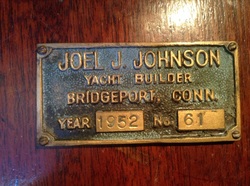 "As I have entered by 80th year, it occurs to me that it is time to write to you before it becomes too late..." This was the first line of an email I received a few weeks ago from Jo Brooks who was Vixen's second owner. She continued: "My deceased husband, Lee, and I owned Vixen from 1961 to 1970. The black and white photo at the beginning of your “old” photos was taken in 1965 in Biscayne Bay, Florida, with me at the tiller and Lee watching from the dinghy. During the years that we owned her, we lived aboard and worked variously in Florida and the Bahamas and cruised in the Bahamas when we had the time. We sold Vixen in Miami in 1970 – my husband was starting up a business building fiberglass commercial fishing boats and we needed every penny that we could collect. Our boats thereafter included two of the commercial 48 footers plus a 40 foot Hood sloop and finally a 32’ Allied Seawind ketch – the latter was a lovely little boat and we kept her for 20 years until just before my husband died in 2005 – none of these ever replaced Vixen in our hearts and dreams. I live now in Matlacha, Florida – a little island town just outside of Ft. Myers. I have a few photos that you might like to have – but best of all, I have the small brass plaque which was originally secured to the forward frame of the companion-way hatch. One day,, the fasteners failed and it fell off, and we never replaced it. It reads” Joel J. Johnson” “Yacht Builder” “Bridgeport, Conn.” Year 1952’ “N0. 61”. I would like to have it go home to Vixen. If you are ever in this part of the world, call me and I will buy you a drink or three." I called Jo and had a talk with her about the time she and her husband owned Vixen. She took my address and sent the plaque to my parents in Tacoma. A few days ago my sister delivered it to us here in Maui. It had always been a mystery as to where the original builder's plaque had gone to. After going missing for 40 years plaque and boat are united again. The photos Jo sent were also a great discovery. For years I have had a reproduction of Vixen sailing in the 1950s hanging inside the cabin. Now, with the original I have much more detail and can see that Vixen carried a topsail yard which must have been added after her first trip around the world. The other revelation of this old photo is that it is not James Stark, the original owner, at the helm but Jo Brooks herself. Vixen is now berthed in the inner harbor of Lahaina, Maui. On Monday we will move the boat down the coast to Maalaea Harbor and stay there until the beginning of June. Then we will prepare for our final ocean voyage back to Victoria -- 2,500 miles across the North Pacific and back to Canada from which Vixen sailed over ten years ago. 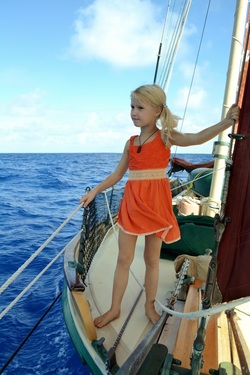 Leaving Panama At anchor in Panama City, Panama – where the water is 86 degrees, the air temperature often over 100 and the tradewinds seldom blow – VIXEN and crew sweltered in the heat. We had been on the Pacific side of the Canal for almost two months preparing for our longest passage yet – the 4,500 miles between Panama and Hawaii. It was hard not to be superstitious about the series of small misfortunes which had plagued our preparations for this long voyage: first there had been the $2,000 we had shelled out to transit the Panama Canal, then there was the en masse demise of our electronic devices from saltwater intrusion (VHF radio, depthsounder, 12 volt inverter, two cell phones, one iPad, an iPod, one GPS, a NOOK, a shortwave receiver and finally the shattering of our 45 watt solar panel) To make matters worse, on the day of our departure our anchor wouldn't come up. Using VIXEN's motor I tried shearing off at wide angles trying to get that anchor to release but to no avail. Hiring a diver would have cost a couple hundred bucks and at least a day's delay so I put on snorkel gear and dove into the fetid mire of Panama City harbor. With near-zero visibility I pulled myself along the chain to the bottom 20-feet down and could feel two wraps around a four foot long iron bar protruding from the bottom. I imagined it to be a lost anchor of Sir Francis Drake who pillaged this coast in 1579. After a couple more dives and only minor bleeding from rusty iron lacerations I freed the chain. Finally, we were on our way. Panama to Costa Rica Tiffany and I had decided to break up the trip to Hawaii by heading to northern Costa Rica about 500 miles to the NW which would get us out of an area of no wind near the equator. The day after leaving Panama City we were motorsailing in the rain against light westerly winds. It was slow frustrating work made more difficult by a steady stream of ships coming and going to the Canal. Eventually, we decided to turn off the motor and sail into the bay of western Panama to find an anchorage until conditions improved. In the afternoon I was asleep with Tiffany on watch and VIXEN sailing slowly on a port tack under full sail. The wind was still out of the west at less than 10 knots. It was drizzling with not much visibility. I was woken by Solianna who told me that Tiffany wanted to take in the jib. By the time I got on deck we had been hit by a frontal system that was blowing 50 knots and gusting 60! The rain was flying horizontally, stinging like tiny bullets. Tiffany was at the tiller doing all she could to keep VIXEN from broaching. I crawled along the deck and groped for the jib halyard on the pin rail then wrestled it down and lashed it to the bowsprit. All the time I kept thinking this must be a 10 or 15 minute squall that will end as quickly as it started as nothing like this had been predicted by any of the weather sources I had checked two days ago. Tiffany and I stared at each other in disbelief as the wind howled and even increased in strength. Next, I looked at the mainsail. A full main in 50 knots of wind – that was something I had never seen. Without speaking I knew Tiffany and I were thinking the same thing: skip reef points one and two and go right for a triple reef. I tied the messiest reef on record with great folds of sail slopping over the boom but it helped. Still, there was too much sail so I struck the staysail and put up the stormjib. Now VIXEN was more manageable. It continued to blow 50 knots plus and the seas were building. Normally, I would have hove to and waited for the storm to pass but we had a rocky shore three miles to leeward. It didn't take much imagination to envision VIXEN meeting her end on those rocks. There was no hope of motoring in those conditions with the prop out of the water between every crest of the waves. I decided to run for the shelter of Cebaco Island 14 miles away and two hours later we were safely anchored while the storm blew itself out over the next 12 hours. This was the only time we've ever gone from full sail immediately to triple reefed main and stormjib. Through it all Solianna and Seffa were great; true sailors at heart. We had no time to pay attention to them while reducing sail. Tiffany just yelled down the hatch to Solianna, “Close all the ports and look after your sister.” Five minutes later Solianna's little head poked out and reported, “All the ports are closed; Seffa's fine; what else can I do?” Seffa's only comment during all the excitement was an official sounding: “Papa, the mast is creaking.” The next day the sky had cleared and we continued towards Costa Rica. Five days later we anchored in Playa del Cocos near the Nicaraguan boarder. Here we were able to take on more fuel and water and do a final shopping for food. Poised in Playa del Cocos it felt we were close to completing our trip around the world but the encounter with the storm off of Panama had reminded us of what could go wrong. I was anxious to leave and get offshore before anything might bring our journey to an untimely end. Hilo, Hawaii was now 4,046 miles away. To Hawaii Fueled up and full of as much water and food as we could carry we left on December 6th for Hawaii with 15 knots of north wind and a waxing moon. For the first time we had a satellite phone which allowed us to call my sister every Sunday at 10am for a couple of minutes to give our position and get weather information. Soon we settled into a routine of watches with Tiffany going to bed with the girls and me staying up until 2am then Tiffany would take over from 2am to 7am. We would both take naps during the day to try and get a total of eight hours of sleep. It worked in theory but in reality the afternoon nap would be broken up or both of us would need to be on deck at night to do a sail change so that we were probably only getting four or five hours of sleep a day. Sometimes, when the weather was settled I would get a really good sleep and feel great but on a voyage this long I could feel myself becoming more and more dazed from sleep deprivation as the trip went on. Solianna and Seffa got a good 10 hours every night and were the most cheerful shipmates one could hope for. They seemed never to get bored. First, they made a fort in the chain locker which went on for a week with all kinds of passwords and whispering coming out of the forepeak. Then the fort moved to our tiny bathroom. I would hear giggles through the port and Solianna would slip secret messages through the ventilation slats to Seffa her faithful servant. When they weren't playing with their 50-or-so dolls and stuffed animals they were getting stories read to them or stargazing with me or watching dolphins and whales and seabirds around VIXEN. This play went on for day after day, week after week. Halfway to Hawaii I quizzed Seffa if she wanted to reach land. As far as I could tell she seemed to have no desire to ever reach land again. It was a fascinating look into the mind of a four year old who was living right in the present moment. I enjoyed the beautiful moonlit nights of perfect sailing but always carried a certain amount of concern for the state of VIXEN and the changing wind and seas. On the night watch I would find myself dividing the day's 24 hour run into the total already sailed and then projecting an arrival date in Hilo. This became a tortuous excercise towards the end of our trip when VIXEN's daily average fell from 130 miles a day to just over 30 miles as the wind died out. Sometimes the distance to Hawaii seemed so immense that I wouldn't even bother to mark our position on our chart of the eastern Pacific. A daily run of 100 miles – a slow but respectable distance for VIXEN – is almost insignificant on a trip of 4,000 miles. “Well, not insignificant – just 2.5 percent of the total,” I thought to myself on the long night watches. “And eventually 2.5 percent adds up and we will have crossed this ocean.” But still it seemed like a long voyage. We had Christmas and New Years celebrations on board which broke things up a bit. We also had “third-of-the-way” celebrations and “four-week” celebrations and “1,000-miles-to-go” celebrations. Then there was the “end-of-the-rum” celebration – a sobering affair. Pacific Sealife What broke up our daily routine more than any party was the unpredictable wildlife of the eastern Pacific. After we crossed the shipping lanes we didn't see any evidence of humans for two or three weeks and I felt honored to explore a part of the planet few people see. My last radio conversation was with a container ship captain carrying a load of soybeans from New Orleans to Honolulu. I thanked him for a weather update and his ship disappeared over the horizon at 15 knots. For the first half of the trip the ocean was alive with life. Both Tiffany and I saw mahimahi leap out of the water in pursuit of fish and for a few weeks there were at least a dozen flying fish on deck in the morning. Some of them were big enough to eat for breakfast and others were as tiny as flies. I fed Solianna some flying fish one morning and said, “How many eight year olds can say they've eaten flying fish for breakfast?” One night I was on watch when a flying fish smacked into my forehead and ricocheted back into the water. I was so stunned I didn't know what had happened until I felt the scales caking my skin and smelt the fishy slime drooling down my nose. I was also the target of a blue-footed booby who decided to spend the night roosting on the top of VIXEN's mast. Just before the girls went to bed I felt a splash on my face that came from directly overhead and not from the wind-driven spray. Sure enough I had been shat upon by the masthead booby which Solianna and Seffa found endlessly amusing. A more frightening and awe inspiring encounter was with a massive bull sperm whale. I spotted him to starboard and turned sharply to port to avoid a collision but then realized that he was heading south right into VIXEN's path. I turned hard to starboard and we all watched the enormous creature slip by not 15 feet away. We had another whale encounter a few days later when 30 or 40 pilot whales raced towards VIXEN and surfed alongside, their squeals reverberating through the hull. This was the climax of having daily visits from dolphins for the first half of the trip. I realize that the acidity of the ocean is rising and fish stocks are plummeting but all is not lost and there is a lot of ocean wilderness still worth preserving. Daily Life on VIXEN Aside from watching the wildlife we had the usual crafts underway. I carried on with crazy macrame from Ashley's Book of Knots and Soli and Seffa started off on rubberband rainbow bracelets then moved onto an infinite number of friendship bracelets. Tiffany did some book binding and sewing. Sometimes we would have gypsy jazz jam sessions on guitar, mandolin and ukulele in the cockpit. All of our Christmas presents were “boatmade”. Seffa gave us each elaborately wrapped drawings she had made. Solianna made me a calender for the year. I gave Tiffany a rum bottle covered in elaborate knotwork and she gave me a leatherbound book she had made. The girls seemed satisfied with this homemade Christmas but then it was discovered that Santa had, in fact, found us in mid-ocean and dropped a sack of toys on deck! When the skies were clear Solianna and I would take sextant sights for the fun of it. After forty nights of Venus and Mercury setting in the west and Jupiter rising at sunset, they felt like old friends. We also read a lot and told the girls elaborate imaginary tales that branched out into subplots and spin-off characters then looped back in time and jumped into the future. Eventually, I lost track of my own storyline but evidently the girls were listening: When my main character “Giggles the pig” was unable to blow a whistle for help in one exciting episode Seffa calmly reminded me that two weeks ago Giggles had received a whistle as a present and had had no trouble blowing it at all. From Panama to Hawaii we crossed five time zones. Every 900 miles I would ceremoniously change the ship's clock back an hour with dictatorial pleasure: “It is no longer 12 o'clock. I hereby declare it to be 11 o'clock.” Landfall in Hilo On the 40th day with 13,000-foot tall Mauna Kea 60 miles away I told Solianna that we should start looking for land. We climbed the rigging and searched the horizon for hours. We had given up hope and then at dusk a distant cloud bank slid off to the south and there it was: the summit of Mauna Kea covered in snow with even the observatory shining in crisp detail in the evening light. The next day we sailed into Hilo harbor and dropped anchor in Radio Bay where VIXEN had last been in October of 2004 after our first voyage from Victoria. Ashore was a green park and other humans and a store selling ice cream and cold beer. Seffa was down below playing with her dolls. “Come on Seffa,” said Tiffany. “Let's go ashore.” Forty-one days at sea and Seffa said without looking up to Tiffany, “That's OK. I think I'll just stay here.” They are! I had my last phone call from them yesterday before their sat plan expired. After 39 days at sea Bruce and Tiff are more than ready to arrive in Hilo. They are only about 200 miles away at N19º and W152º,30'. They were cruising along quite swiftly until Sunday when the wind died down to 3kts. The past two days they have been bobbing around feeling a bit frustrated especially because they are so close. Bruce is hesitant to motor because his fuel supply is running low. However, this afternoon it should pick up to 9kts. which will hopefully have them arriving on Thursday. So, if there are any Vixenistas near Hilo, look out for them in the harbor later this week. I know they would appreciate not only a welcoming party, but also, anyone willing to celebrate their full circumnavigation! Woo-hoo!
Posted by Bruce's sister, Nicole Vixen is now more than halfway to Hawaii. They set sail for blue water from Costa Rica on December 5. Luck has been on their side and they are typically seeing 15 knot winds and mostly clear skies. As of today, December 28, they are at W129º,15' N15º20'. They estimate their arrival will be in two weeks. The girls are as content as ever, but after 23 days at sea Bruce and Tiff are looking forward to landfall. All are in good spirits and enjoying the crossing. Highlights include an inquisitive pod of 30 pilot whales, a massive sperm whale blocking their way, and a surprising flying fish in the face during a night watch.
Also, I just saw that Wooden Boat Magazine has published another of Bruce's articles. So make sure you get your hands on a copy this month! This post was brought to you by Bruce's sister, Nicole.  This morning we made the final run to Mercado Abasto and loaded up with fresh fruits and vegetables. The picture above is of the papaya shop. The papayas on the upper shelves are bigger than a five gallon jerry can. Our best deal was fifty pounds of oranges for five dollars. Because of all this food, extra water and diesel Vixen is showing just a sliver of bottom paint at the waterline. We'll have one more stop tomorrow at Isla Contadora for a swim and then shove off for Hawaii. On these long voyages I spend at least a few minutes thinking about every person that I've ever known so be assured well be thinking of you. Below is Soli's homemade Monopoly board to keep us occupied during the passage. |
AuthorBruce Halabisky is a wooden boat builder and sailor. He and Tiffany Loney are the owners of Vixen. Archives
January 2017
Categories
All
|
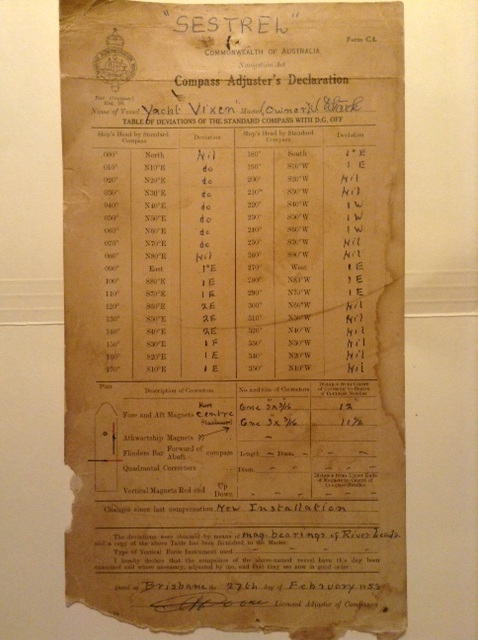
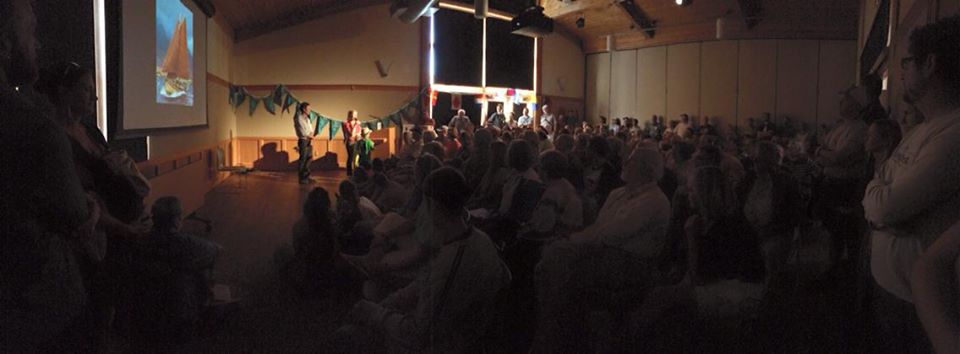
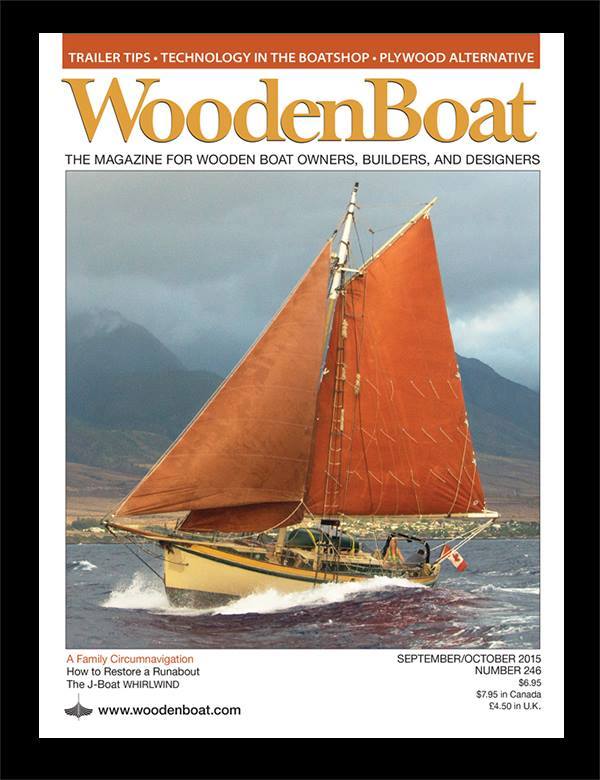
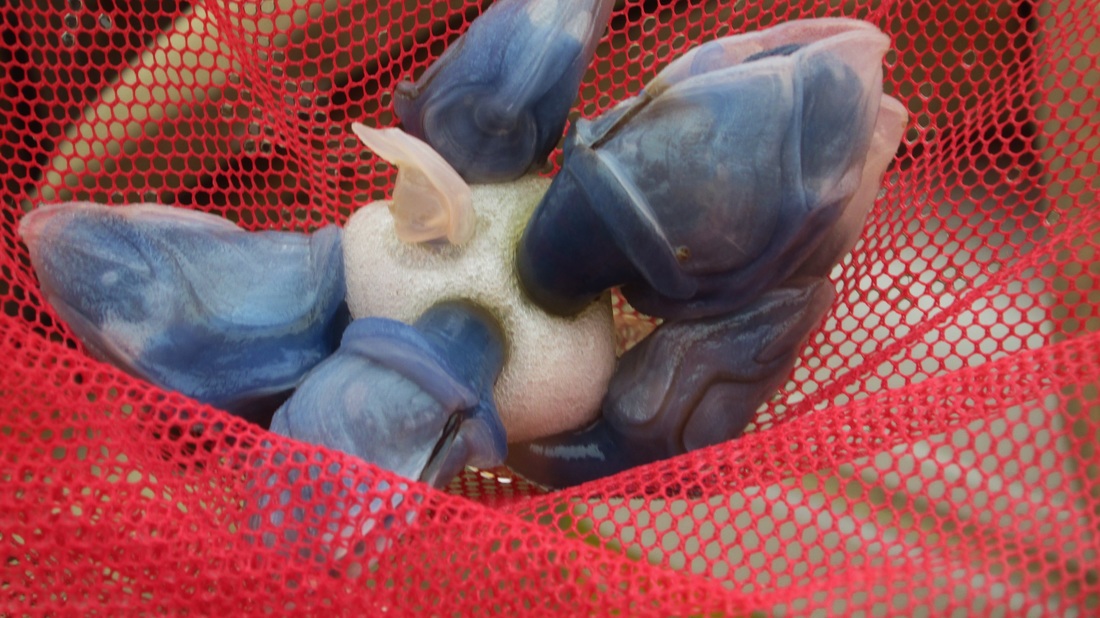
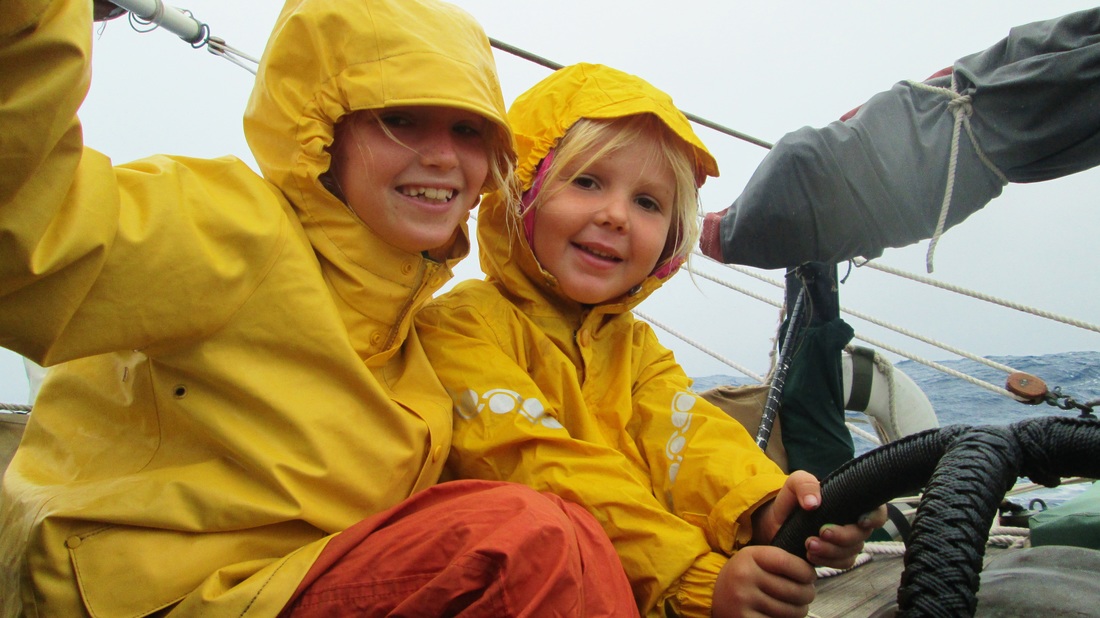
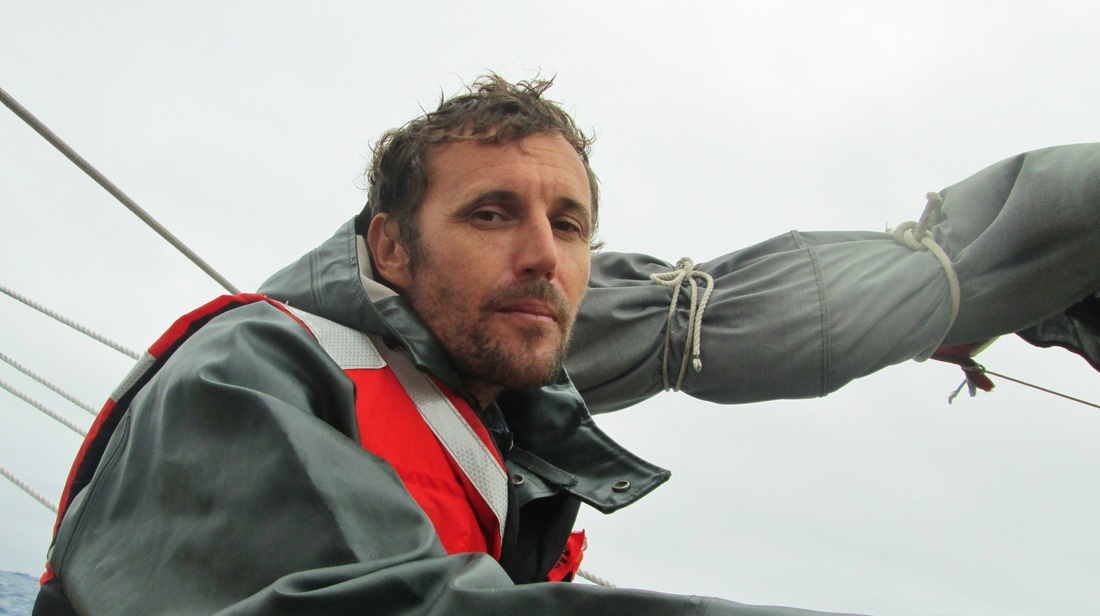
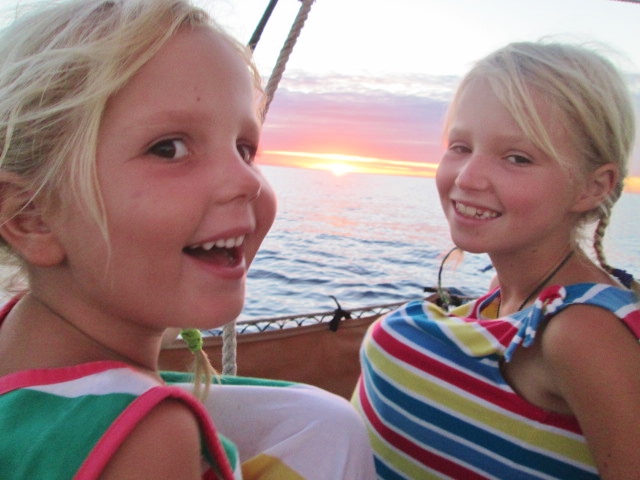
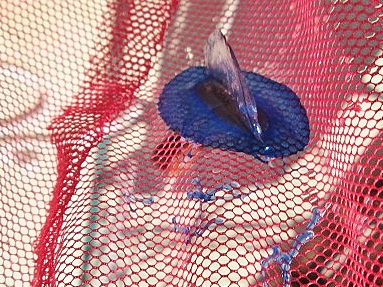
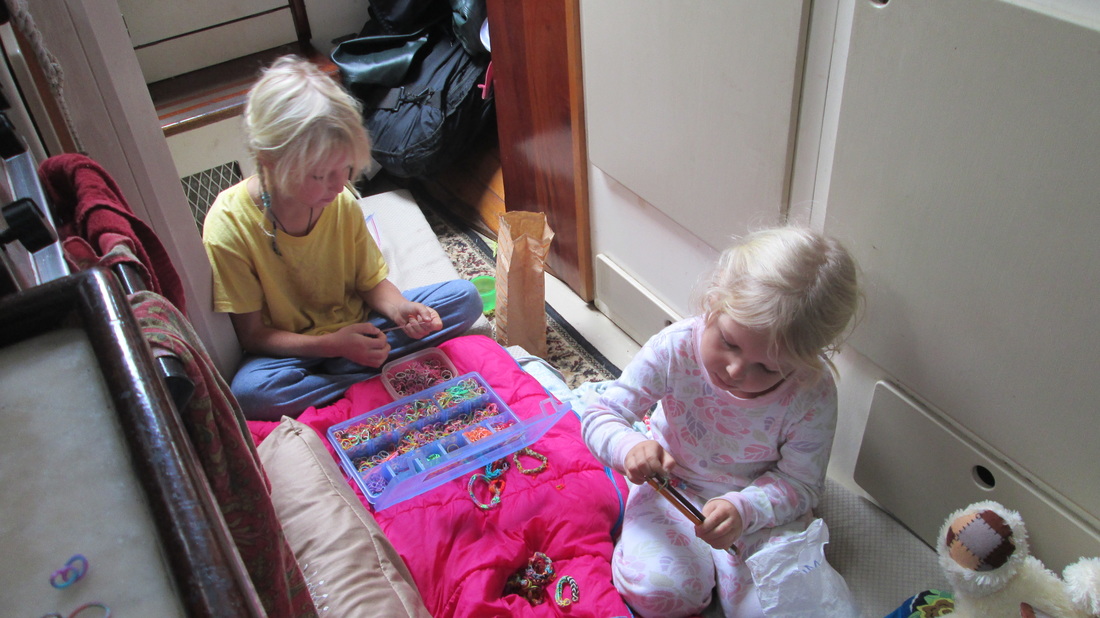
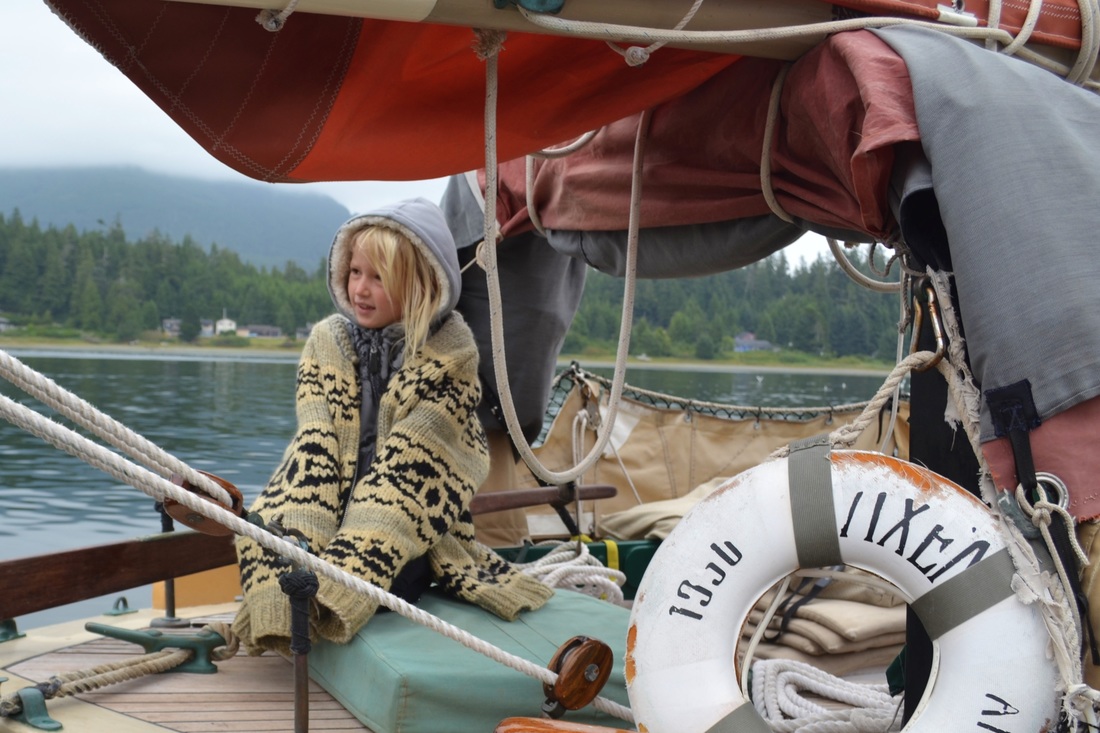
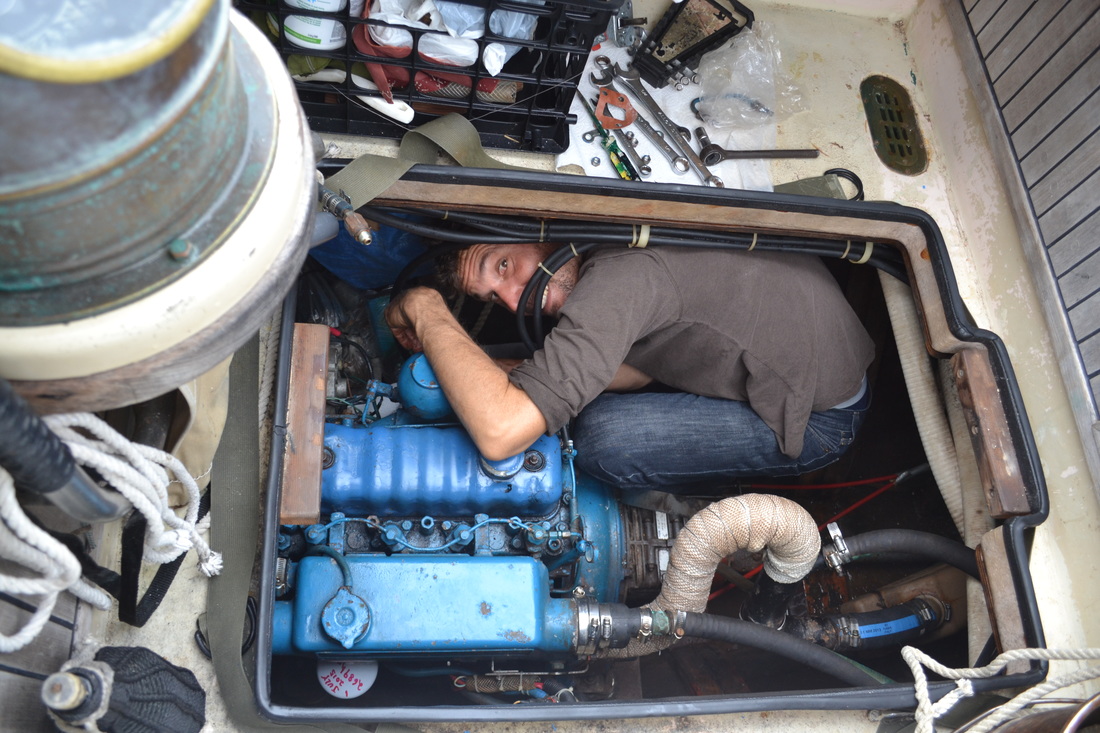
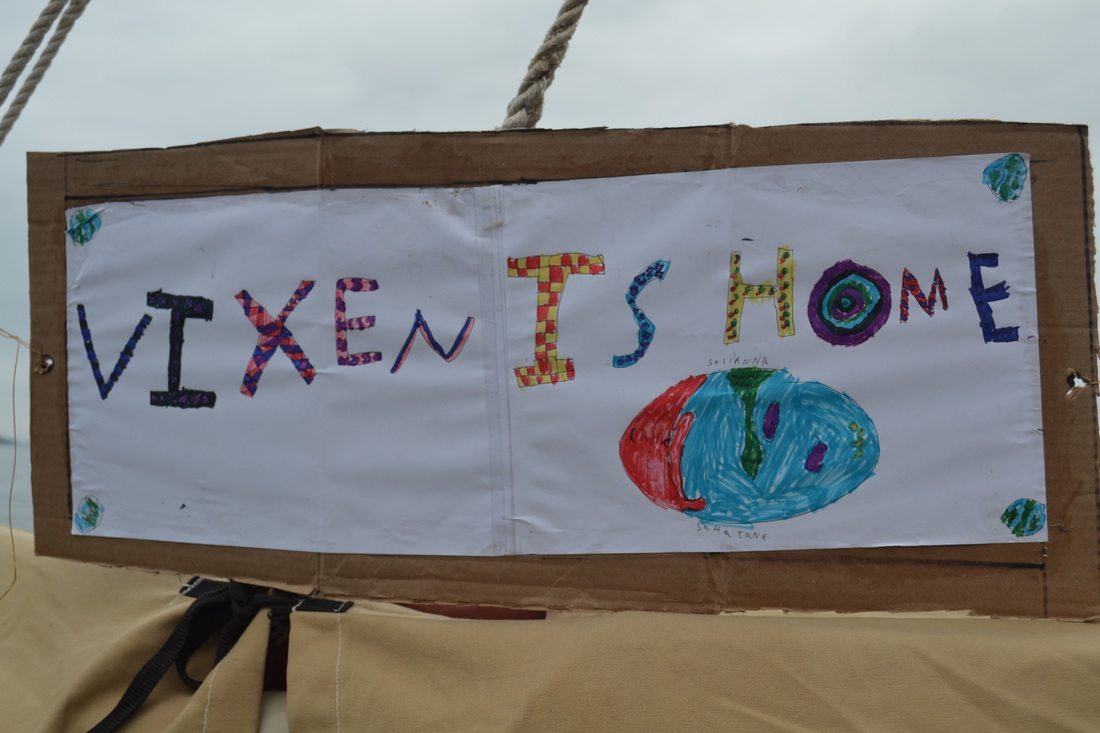
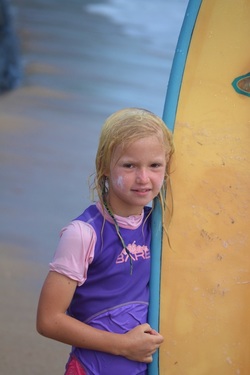
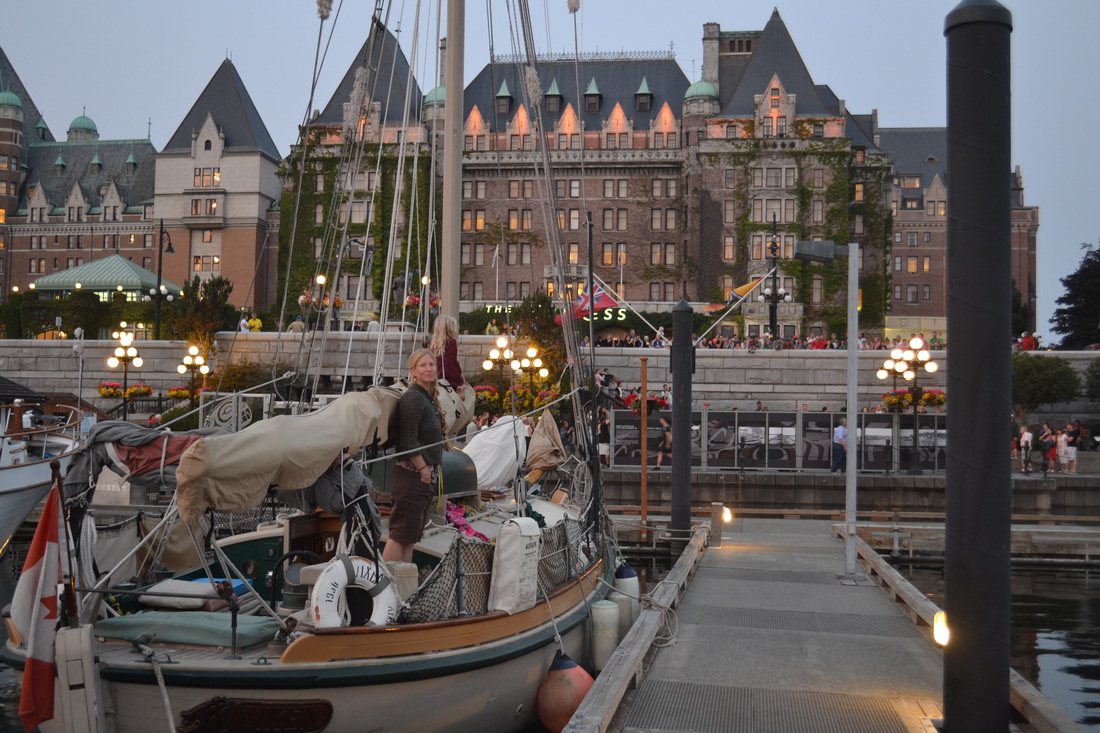
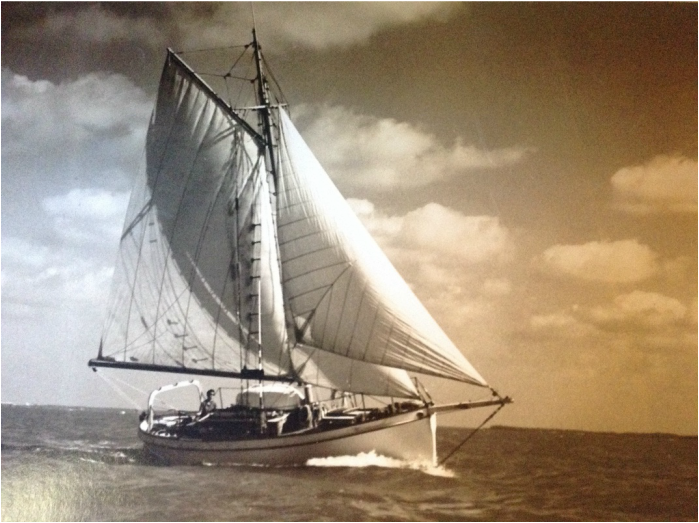
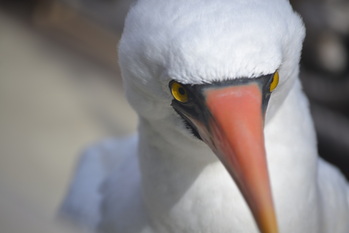
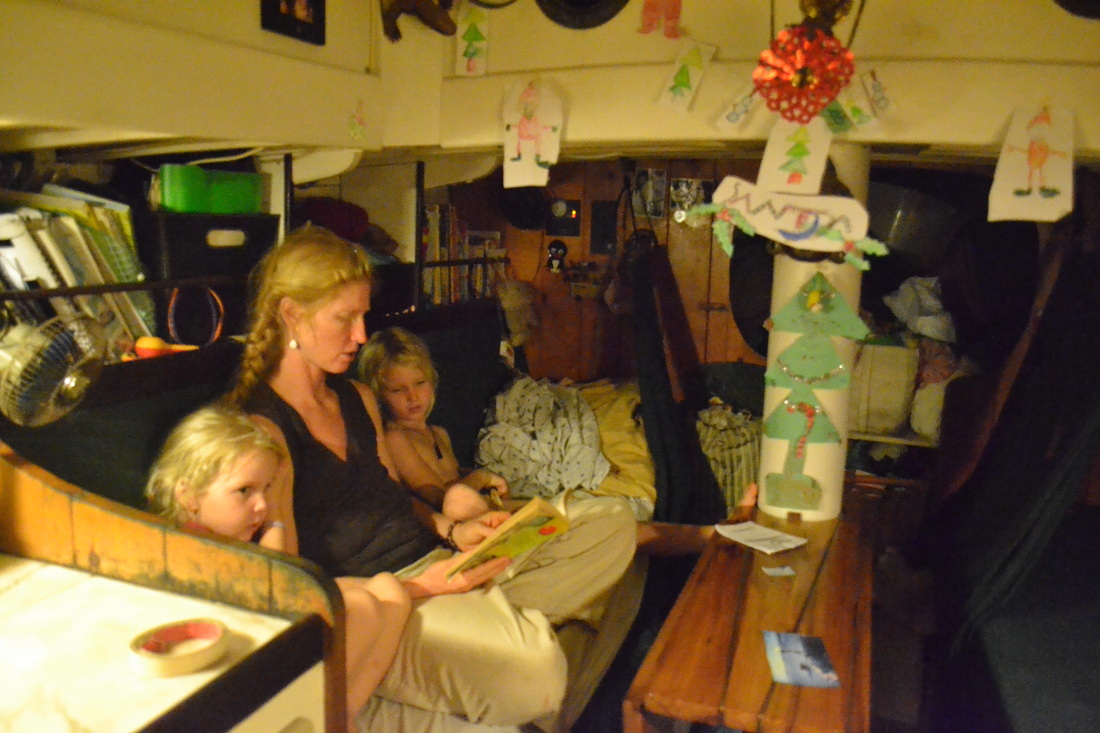
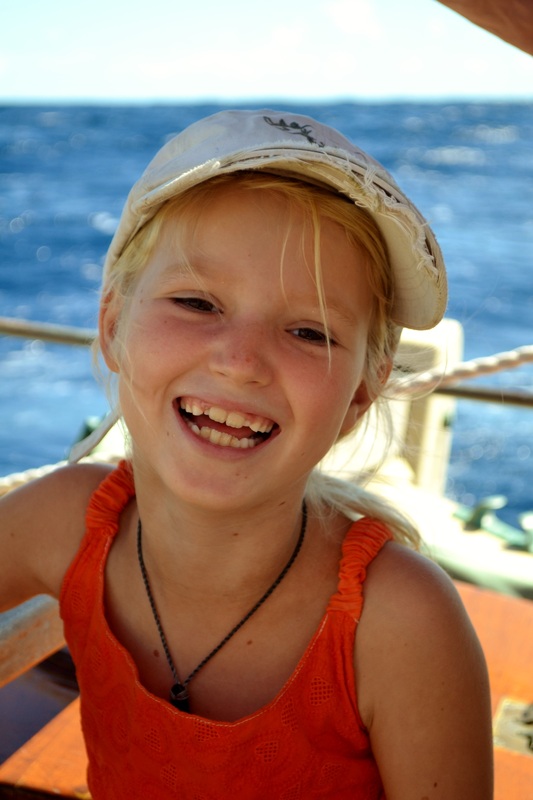
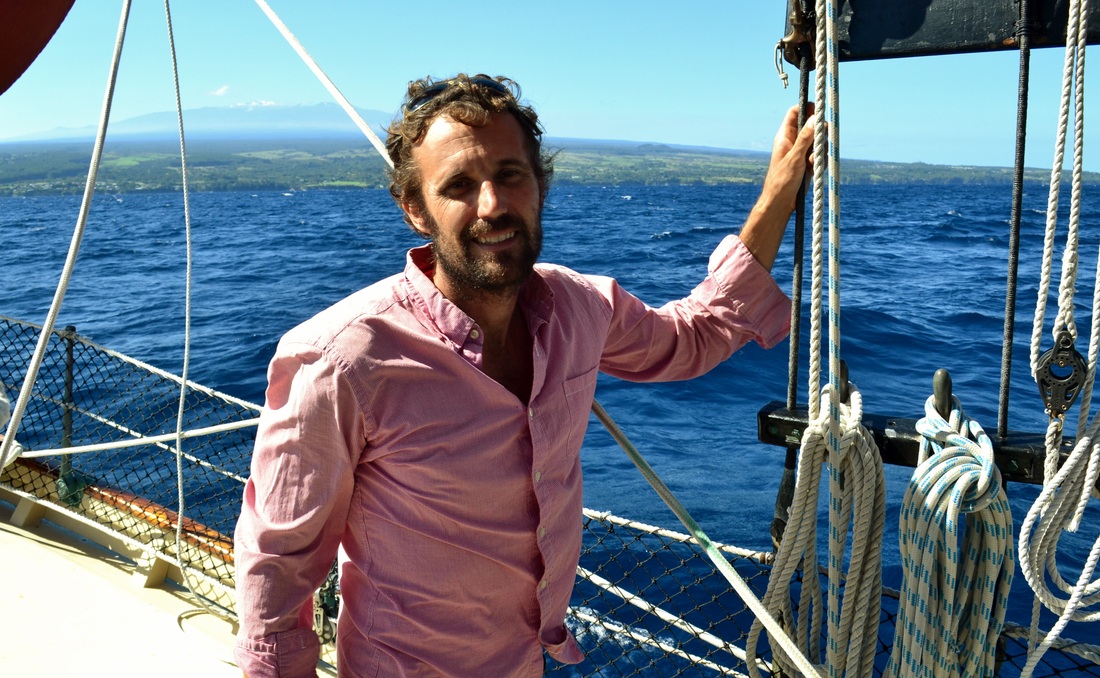
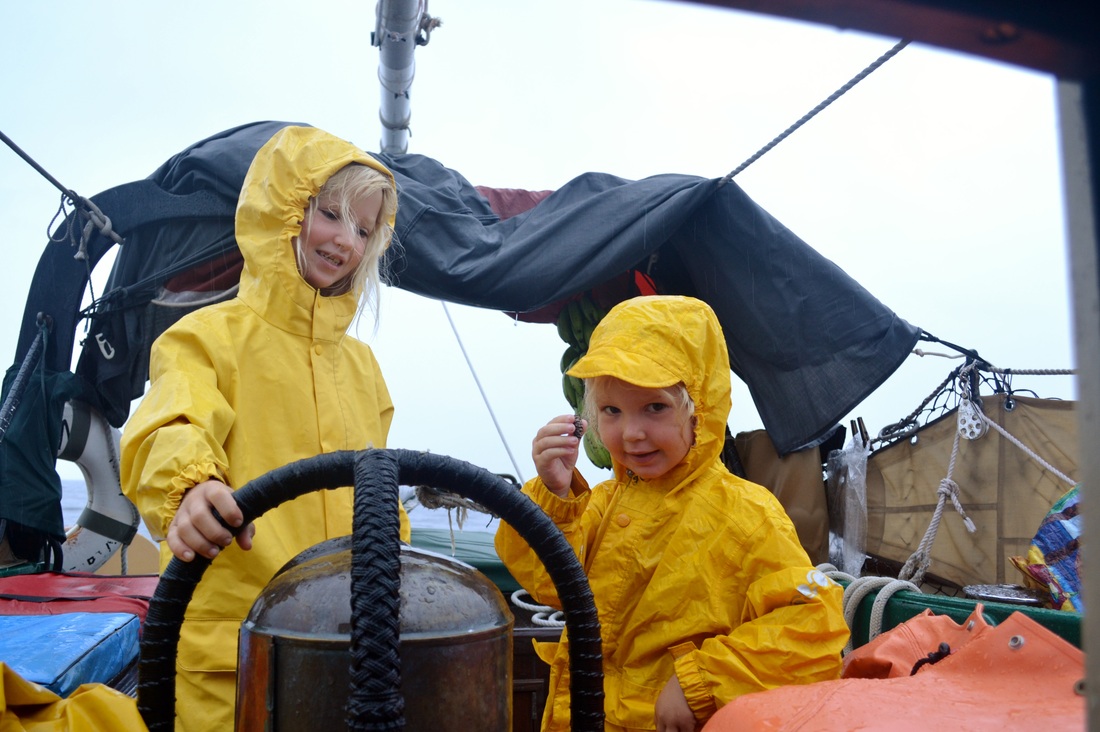
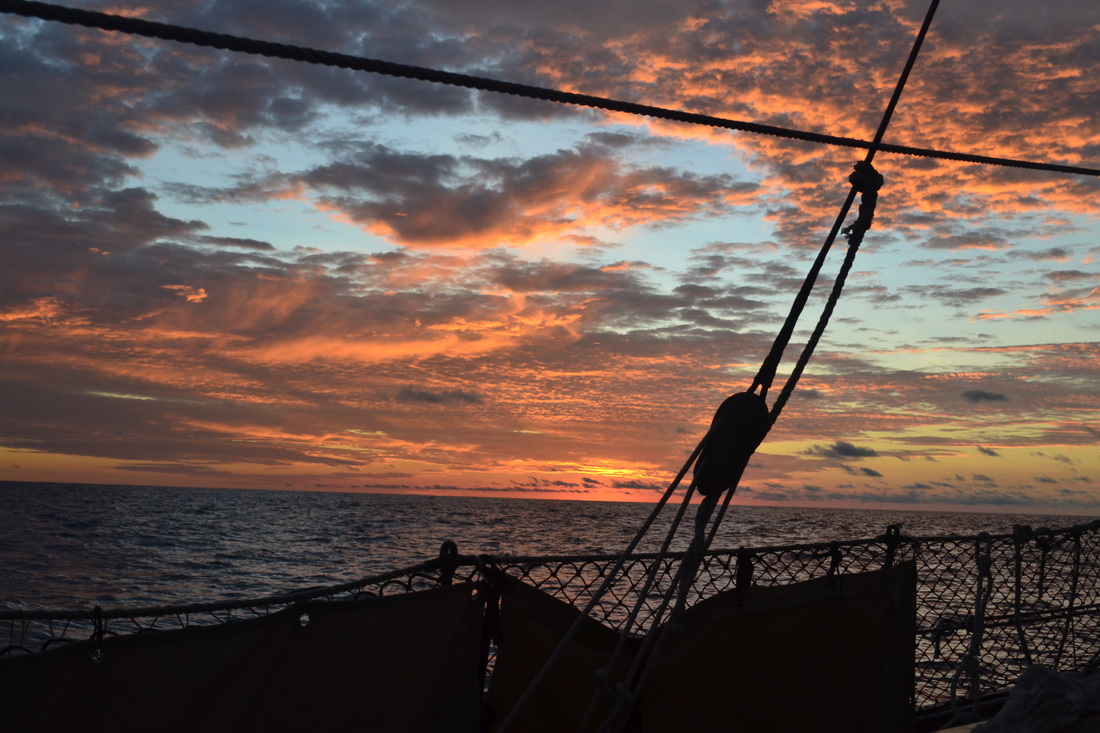
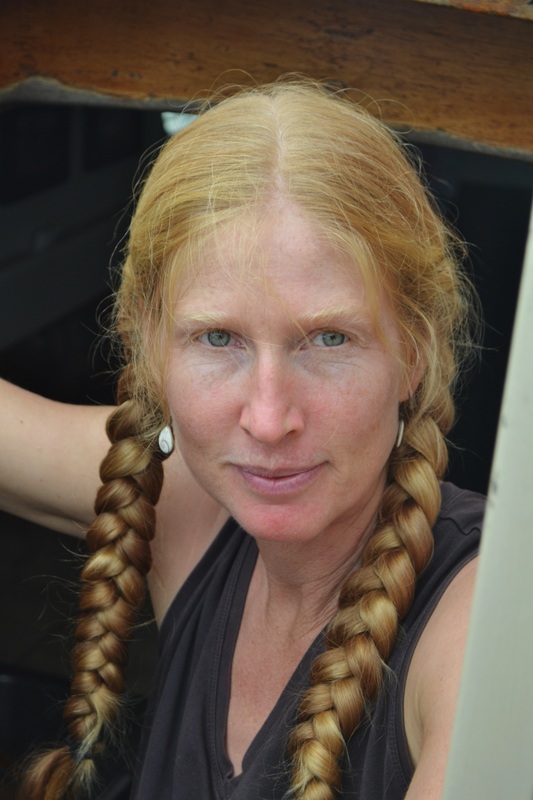
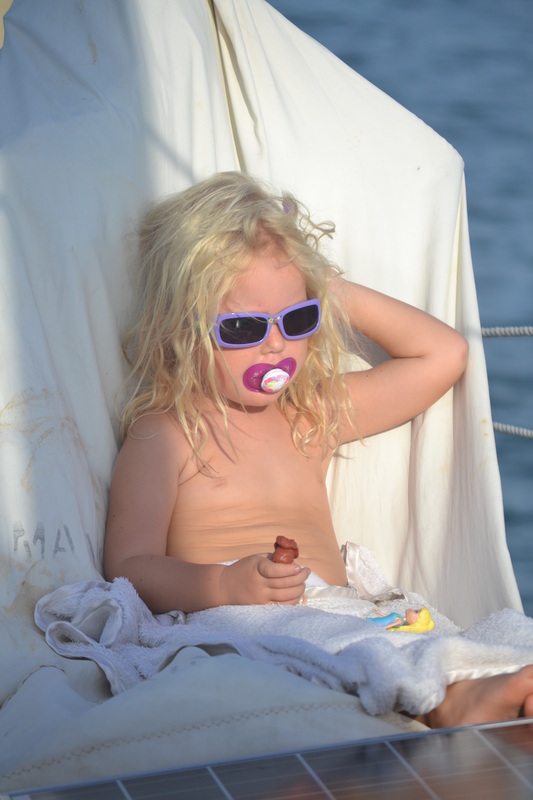
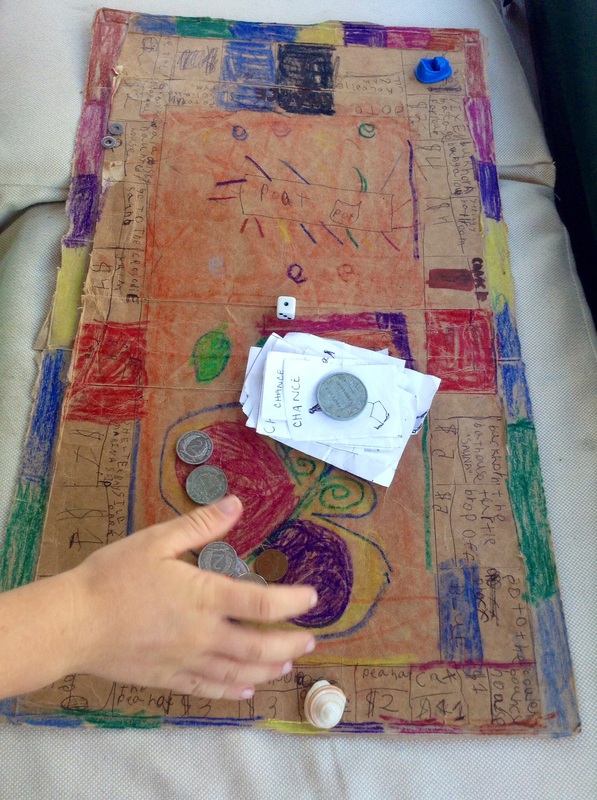
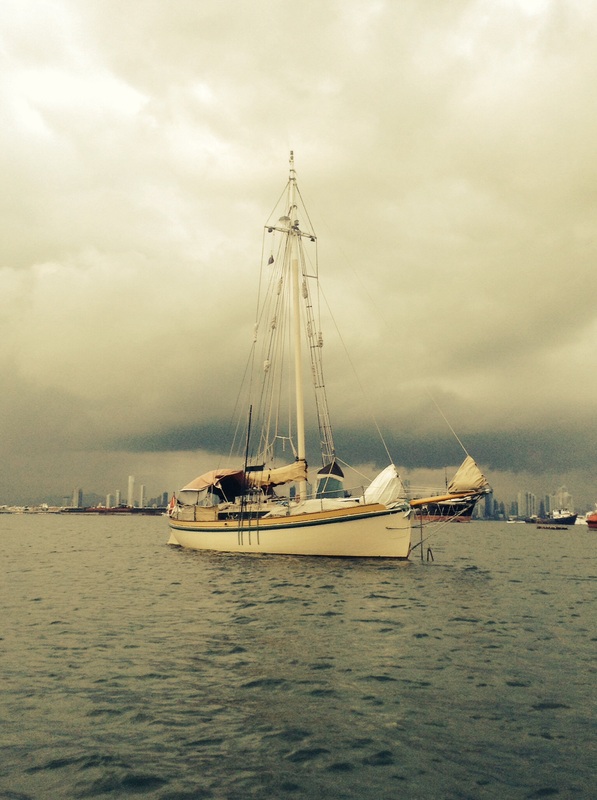
 RSS Feed
RSS Feed
